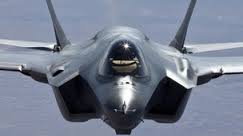Somewhere in Ottawa, unknown to the outside world, there is a black hole — a secret place where the government consigns toxic ideas, ideas that it dares not implement, yet cannot bring itself to kill.
The F-35 fighter jet is one such idea. The Harper government has been grappling with it ever since it took office in 2006. It has heard from experts that the super-sophisticated F-35 is not the right plane; that it does not suit Canada’s modest military requirements; that its single engine makes it too dangerous for patrols across the country’s vast distances; and that its humongous cost — $45 billion or more for 65 aircraft — puts it well beyond the reach of the budget-conscious Conservatives.
Somehow the F-35 has managed to survive on the government’s to-do list, never categorically endorsed, but also never firmly rejected. This June, it surfaced on the cabinet’s agenda for a decision. To his credit, the prime minister removed the item from the agenda, ostensibly to give ministers more time to weigh the implications. So the F-35 went back into that black hole.
One can hope that its time there will be usefully spent. The question of whether Canada should buy any military aircraft without an open competition among manufacturers is a long-standing issue.
There have also been some recent developments to be considered. Safety is one. On the eve of the July 4 holiday, the Pentagon announced it was grounding its entire fleet of brand new F-35s following an engine fire during trials in Florida. It decided it would be too dangerous to fly the F-35s across the Atlantic to debut at two air shows in Britain, the Royal International Air Tattoo and the Farnborough International Airshow. Those appearances were cancelled.
Critics in the United States keep hammering away at the cost. The Pentagon plans to purchase 2,443 copies of the F-35 at an all-in cost (including operating costs over the lifetime of the aircraft) of something in excess of $1 trillion.
To the critics, it’s a question of spending priorities. Eliminate homelessness? The F-35 expenditure would be enough, one report calculated, to buy every homeless person in the United States a $664,000 house.
Food for the poor? If the money were directed to the U.S. National School Lunch Program, it would pay for nutritious lunches for all 55 million students enrolled in elementary school in country, not just next year, but for the next decade. Or to look at it another away, the money could fund United Nations peacekeeping operations at their current level for 46 years.
Logic and priorities aside, there is no chance that the United States will abandon the F-35 program. It is too far in to back out, having already spent $298 billion in taxpayer funds.
What’s more, the F-35 is more than a weapons-acquisition program for Washington. It is a massive job-creation scheme, extending into almost every corner of the United States. It’s a huge pork barrel. Lockheed Martin, the manufacturer, has hired suppliers and subcontractors in no fewer than 45 states, meaning virtually every senator and congressman has a vested interest in keeping the aircraft program alive.
Like other countries that have been supporting the F-35, Canada’s aeronautical sector has a slice of the jobs. The slice would presumably grow if Canada proceeds with the purchase.
For a government focused on job creation and economic growth — and facing a general election next fall — those highly paid jobs are an important consideration. Against them, the Tories must weigh arguments that Canada doesn’t really need F-35s to do what they meant to do — support ground forces in combat zones; that the requirements of continental defence could be better served by twin-engine aircraft; and that the obscene price of $45 billion or more would devour an inordinate share of the national budget.
The F-35 would be a hard sell on the hustings, which is why it may remain in the black hole for quite some time.
Cambridge resident Geoffrey Stevens, an author and former Ottawa columnist and managing editor of the Globe and Mail, teaches political science at Wilfrid Laurier University and the University of Guelph. His column appears on Mondays in Waterloo Region and Kitchener Record. He welcomes comments at [email protected].



